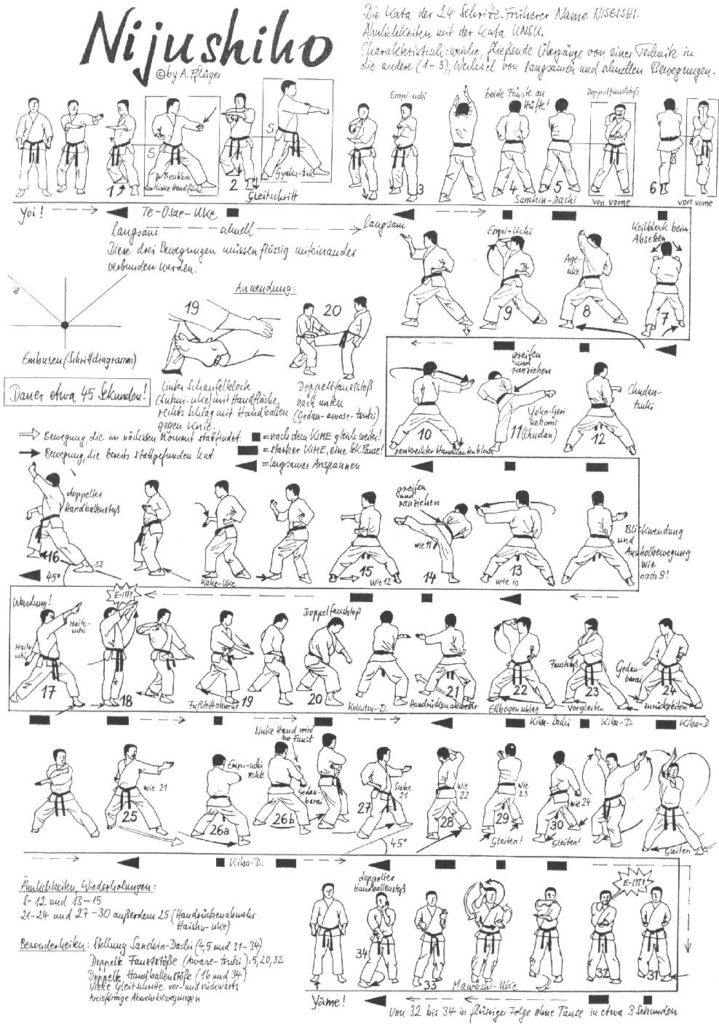Nijushiho, or "24 Steps," is named after the number of foot movements, or "steps," present in the kata. Originally called Niseishi (twenty-four) in Okinawan, it is one of three Shotokan kata that descended from Seisho Aragaki, the others being Sochin and Unsu. The Aragaki kata are arguably the most popular of the advanced Shotokan kata, possessing unusual and mystical techniques, allowing a natural flow from one move to another. This is especially true with Nijushiho, where at certain points in the kata, the timing becomes very rapid, almost seeming a little rushed, yet always followed by a slow move to temper the kata's pace and maintain the kata's fluidity. It is an excellent kata for developing timing and rhythm. The sanchin-dachi (hour-glass stance, not very popular in Shotokan), the traditional haito (palm down), and the makiotoshi/teishi-awase-zuki combination (one of the "coolest" moves in kata) are all exclusive to Nijushiho and Unsu, both of which are Aragaki kata. The hiji-ate at the beginning of the kata, the several awase-zuki, and the haishu techniques are all solely found in Nijushiho, bringing to light a variety of new applications involving arm-locks, chokes, etc.
The embusen is fairly compact, not allowing for too many steps in any one direction, and changes in direction are made with very little motion, giving this kata a fairly small frame. The kata abounds with double-hand attacks and elbow strikes which are often used for close range fighting. All of this lends to the idea that the karateka must defend within a small space, quickly changing opponents. The only long-range techniques found in Nijushiho are the two yoko-kekomi, the only traditional kekomi found in any kata (unlike the gedan-kekomi from Bassai). However, these kicks are considered a recent innovation, previously being only knee lifts, and were most likely not present in the kata's original form. Nijushiho presently has a count of 34, with the two kiai points at #18 and #33 (Best Karate #10, 33 counts, kiai #18 & #32).






